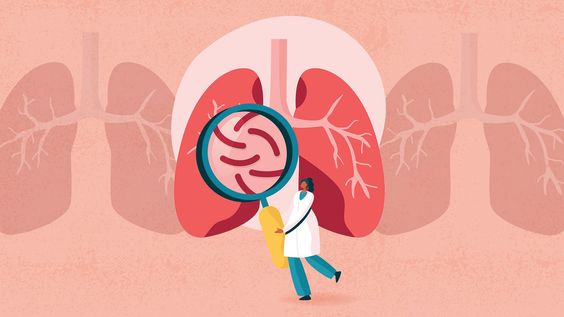Introduction
Chronic obstructive pulmonary disease (COPD) is a group of lung diseases that cause airflow blockage and breathing-related problems. It is a long-term condition that can significantly impact a person's quality of life. Millions of people worldwide live with COPD, and it is a leading cause of morbidity and mortality.

The most common conditions that fall under the COPD umbrella are emphysema and chronic bronchitis. Emphysema damages the air sacs in the lungs, making them less elastic and reducing their ability to absorb oxygen. Chronic bronchitis causes inflammation and narrowing of the bronchial tubes, leading to mucus buildup and coughing. While these conditions have distinct characteristics, they often coexist in individuals with COPD.
This blog post will delve into the symptoms, treatment options, and management strategies for COPD, empowering patients and their loved ones with the knowledge to navigate this challenging condition. We will explore the various aspects of COPD, including diagnosis, lifestyle modifications, medications, and pulmonary rehabilitation, to provide a comprehensive understanding of this widespread respiratory disease.
Recognizing the Symptoms of COPD
Early detection of COPD is crucial for effective management and slowing disease progression. Recognizing the early signs and symptoms can prompt individuals to seek medical attention and receive appropriate care.
Common symptoms of COPD include:
- Shortness of breath: This is often the first noticeable symptom, especially during physical activity.
- Chronic cough: Persistent coughing, often with mucus production, is characteristic of COPD, especially in the morning.
- Wheezing: A whistling sound during breathing, indicating narrowed airways.
- Chest tightness: Feeling like your chest is constricted or compressed.
- Frequent respiratory infections: Individuals with COPD are more susceptible to colds, flu, and pneumonia.
- Fatigue: Feeling tired and lacking energy, even after minimal exertion.
- Blueness of the lips or fingernails (cyanosis): This indicates low blood oxygen levels, a serious complication of COPD.
If you experience any of these symptoms, especially if you are a smoker or have a history of exposure to lung irritants, it's essential to consult a healthcare professional for a proper diagnosis.
Treatment and Management of COPD
While COPD is not curable, various treatment options and management strategies can help relieve symptoms, slow disease progression, and improve quality of life. The specific approach depends on the severity of the condition and individual patient needs.
-
Lifestyle modifications:
- Smoking cessation: Quitting smoking is the most crucial step in managing COPD, as it significantly slows disease progression.
- Avoiding lung irritants: Exposure to dust, fumes, and chemicals can worsen COPD symptoms.
- Healthy diet and exercise: Maintaining a healthy weight and engaging in regular physical activity, as tolerated, is beneficial for overall health and lung function.
-
Medications:
- Bronchodilators: These medications relax the muscles around the airways, making breathing easier.
- Inhaled corticosteroids: These medications reduce inflammation in the airways.
- Combination inhalers: These combine bronchodilators and inhaled corticosteroids for greater effectiveness.
- Oxygen therapy: In severe cases, supplemental oxygen may be necessary to maintain adequate blood oxygen levels.
-
Pulmonary rehabilitation: This comprehensive program includes exercise training, education, and breathing techniques to improve lung function and quality of life.
Remember, managing COPD is an ongoing process that requires active participation from the patient and collaboration with healthcare providers. By understanding the disease, following treatment plans, and making healthy lifestyle choices, individuals with COPD can live fulfilling lives.





